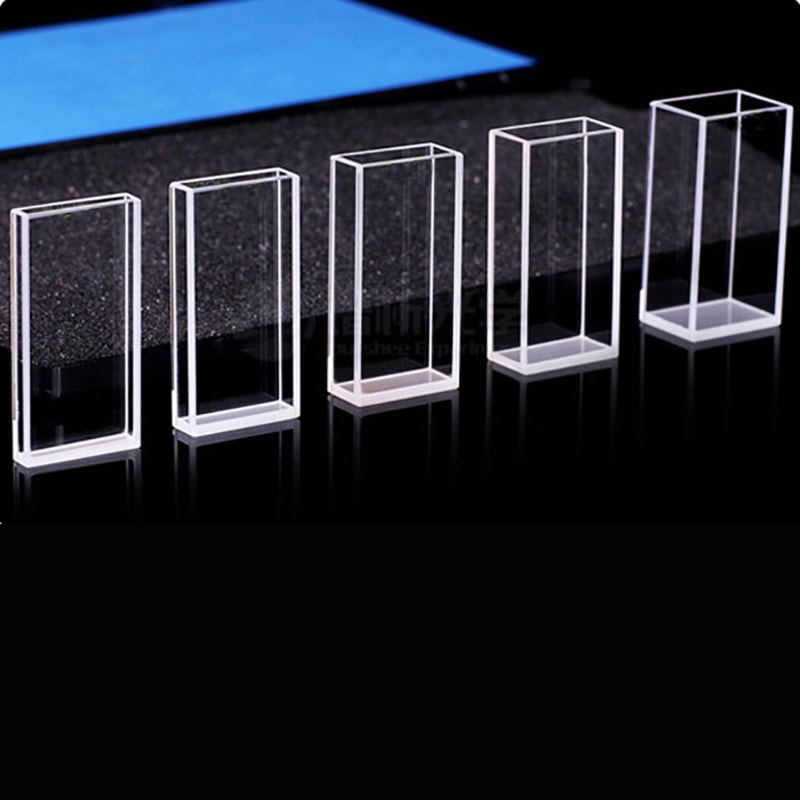The spectrophotometry procedure is the base of scientific discovery. It reveals the secrets of light absorption and transmission across particular wavelengths. Its heart is the cuvette a humble yet essential vessel that stores samples to be analysed. The cuvette is a tiny container that may seem simple, yet its features and dimensions, such as the length of the cuvette’s path as well as the material it is made of, is crucial for obtaining precise data on purity and concentration. Explore this fascinating universe in which cuvette dimensions and size affect the results of each experiment.

Image credit: cuvet.co
The Power of Cuvette Path Length
Imagine that a beam passes through a specimen. The result depends on the length of the path in the cuvette. This is the distance light travels within the liquid. For many labs, a cuvette of 1 cm in length is the best since it achieves the right balance between sensitivity as practicality. What’s the reason? The longer the length of the light path, the greater the amount of light that is taken in. Thus, the light signal is amplified when using diluted samples. When it comes to concentrated solutions, such as protein or nucleic acids, a shorter path length can alter the course of play. This reduces the amount of dilution necessary in order to save precious samples and decreasing the preparation time. The lesson to take away? It’s an art to align the length of a path with samples’ requirements. This can improve accuracy.
Cuvette Dimensions and Size more than meets the Eye
Cuvette size isn’t just about how much liquid fits inside it’s about how the vessel interacts with the spectrophotometer. They are available in a variety of volumes and shapes to meet particular needs. For instance semi-micro cuvettes, which have smaller dimensions and thicker walls tackle tiny sample volumes like a few microliters of an uncommon biological extract. They have thick walls that allow light to be able to pass through the sample without wasting even a single drop. If you compare this to a cuvette standard there is a noticeable difference with fewer pipetting steps less errors, and results which hold up. This clever technique proves that the size of a cuvette isn’t just a number but the strategy behind it.
The 1 cm length of the Path Cube The 1 cm Path Length Cube: A Lab Favorite
Why is it that the 1 cm cuvette’s path length is so widely used in lab experiments? It’s ideal for biochemical measurements when samples are scarce and milliliters count. This design is a classic and provides regular absorbance readings, without overloading the detector. This makes it the ideal choice for anything from DNA purity tests to enzyme tests. It’s not the hero that can be used for all. If you substitute it for a cuvette having distinct geometry or length, like the one used for emission studies, the results can be very different. It is crucial to select the right tool, and not one you feel comfortable with. A tool that isn’t matched is comparable to a cuvette that’s not matched.
Material Matters Beyond Size and Path
Cuvette dimensions only tell a portion of the story. The choice of material will seal the deal. Quartz and glass cuvettes shine due to their excellent transmission rate which allow light to pass through with minimal interference. They’re durable and reuseable. This makes them ideal for spectroscopy. On the other hand, plastic cuvettes offer affordability and ease of use. There is no need for clean-up or cross-contamination. Simply use the cuvettes then throw them away. For aqueous solutions and quick DNA and RNA tests they’re hard to beat. What’s the cost? The trade-off? Quartz is the material of choice for those who are adamant about purity, whereas plastic is the choice of the practical.
The art of precision in practice
Cuvettes’ appeal lies in their ability to adapt. The combination of spacers and shorter lengths of path allows the handling of large samples and larger vessels are able to handle volumes. The accuracy of the data is determined by the length of the pathway and size, as well as the material used. Take a look at a lab looking at a protein. Semimicro cuvettes have an easier path that eliminates the need for dilution and gives reliable results quicker. Contrast that with a sloppy exchange of cuvettes in mid-experiment and the numbers falter. It’s a reminder that in spectrophotometry, the smallest details wield the biggest impact.
Cuvettes are small but they have a significant role to play. Cuvettes come in a variety of sizes including the cuvette that has a 1 cm length path and custom-designed. They are able to bridge the gap between data and insight. A cuvette that is right for you can transform an excellent measurement, regardless of whether you’re looking for concentration or purity and precision, into a fantastic measurement.
